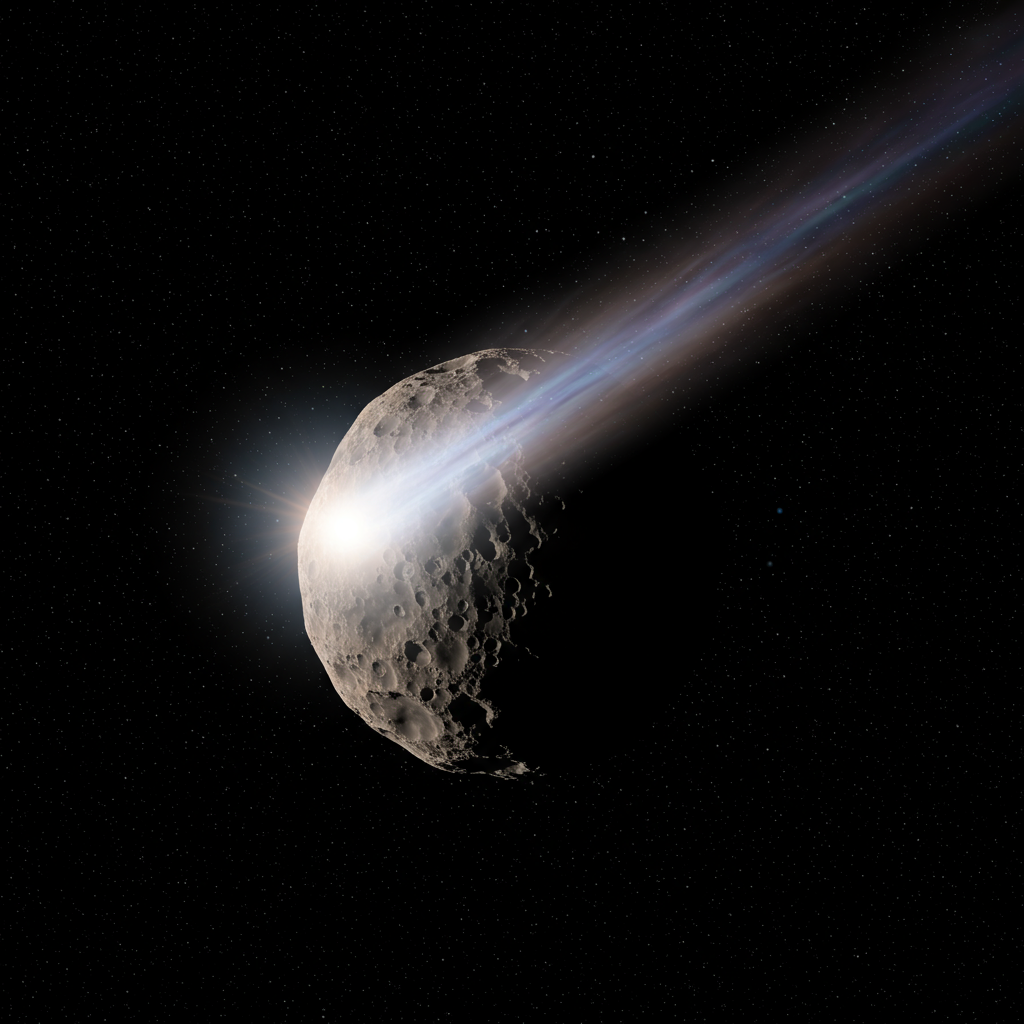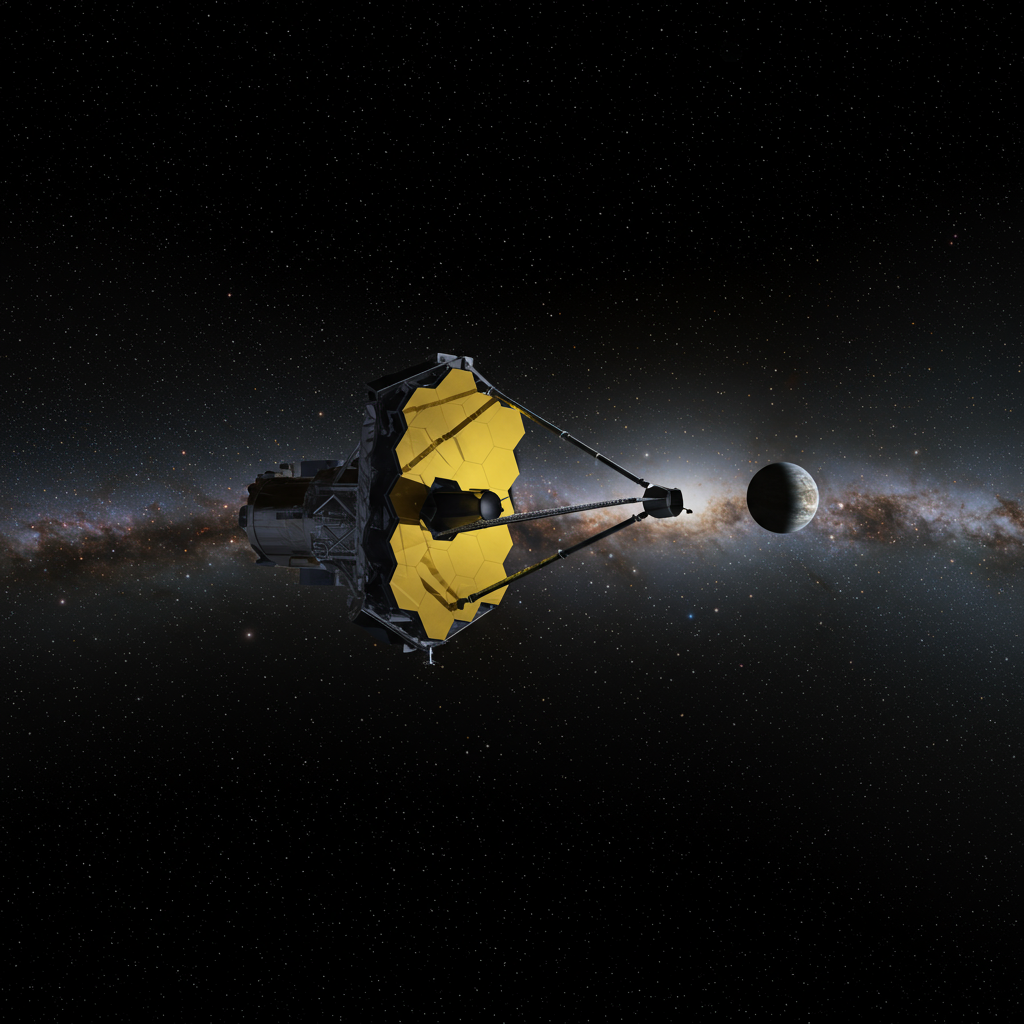A historic astronomical event unfolded on July 1, 2025. Astronomers announced the discovery of comet 3I/atlas, a fascinating celestial object with an origin far beyond our solar system. This marks only the third time humanity has confirmed a visitor from interstellar space passing through our neighborhood. Its unique journey offers scientists a rare chance to study material from another star system firsthand.
A Rare Visitor: What is Comet 3I/ATLAS?
Comet 3I/ATLAS is classified as an interstellar object. This means it did not form in our solar system. Instead, it originated around another star entirely. After potentially millions or billions of years drifting through the vast emptiness between stars, it has now serendipitously entered our solar system’s gravitational influence.
Astronomers categorize this visitor as a comet. Unlike rocky asteroids, comets are essentially cosmic snowballs. They consist of a nucleus made of ice, frozen gases, dust, and rock – remnants from the birth of planetary systems. As a comet approaches a star, its icy components heat up. This causes them to sublimate, turning directly into gas. This gas and dust forms a glowing cloud around the nucleus, known as the coma, and often creates characteristic tails stretching millions of miles. Observations show 3I/ATLAS is active. It displays this tell-tale coma. This activity confirms its cometary nature, distinguishing it from interstellar asteroids like ‘Oumuamua. While its exact size is still under investigation, some estimates suggest its icy nucleus could be up to 20 kilometers (about 12 miles) wide.
The Third Interstellar Object Ever Seen
The discovery of 3I/ATLAS is significant because such visitors are incredibly rare. Before this object, only two others had been definitively identified as interstellar: 1I/’Oumuamua, first spotted in 2017, and 2I/Borisov, discovered in 2019. Each of these previous objects provided valuable, albeit brief, opportunities to study material from beyond our Sun’s birthplace. 3I/ATLAS continues this exciting frontier of astronomy. Studying its composition could offer unique insights into the chemistry of exoplanetary systems.
Discovery and Tracking This Cosmic Drifter
The initial report of Comet 3I/ATLAS came on July 1, 2025. The NASA-funded ATLAS (Asteroid Terrestrial-impact Last Alert System) survey telescope, located in Rio Hurtado, Chile, made the first official observations reported to the Minor Planet Center. The ATLAS survey is designed to scan the sky for potentially hazardous objects, but it also spots other transient events.
Following the initial report, astronomers quickly looked for earlier sightings. They successfully found “pre-discovery” observations dating back to June 14. These earlier views were hidden within the archives of other ATLAS telescopes situated worldwide and Caltech’s Zwicky Transient Facility at the Palomar Observatory in San Diego County, California. These early observations were crucial. They helped astronomers quickly calculate the object’s trajectory. This path clearly indicated it was on a hyperbolic trajectory. A hyperbolic path means its speed is too high for it to be bound by the Sun’s gravity. It is simply passing through. Global efforts involving numerous telescopes continue to track the comet’s progress through our solar system. Space agencies like ESA are also contributing to these tracking efforts. They use telescopes in locations such as Hawaii, Chile, and Australia.
Naming the Interstellar Comet
The naming convention for comets is generally straightforward. They are named after their discoverer(s). In this case, the ATLAS survey team received the naming credit. The “I” in 3I/ATLAS stands for “interstellar.” This immediately tells astronomers its origin is outside our solar system. The number “3” indicates it is the third confirmed interstellar object ever observed.
Comet 3I/ATLAS’s Journey Through Our Solar System
When it was first discovered, Comet 3I/ATLAS was roughly 410 million to 420 million miles (670 million kilometers, or about 4.5 astronomical units) away from the Sun. This placed it within the orbit of Jupiter at the time. Astronomers traced its path back. They determined it was approaching from the general direction of the constellation Sagittarius. This direction points towards the central region of our Milky Way galaxy.
The comet is traveling exceptionally fast. Upon discovery, its speed was estimated at around 137,000 miles per hour (221,000 kilometers per hour, or 61 kilometers per second). Its speed will continue to increase as it gets closer to the Sun due to the Sun’s gravitational pull. Because of its hyperbolic trajectory, it will not settle into a stable orbit around the Sun. It will simply pass through our solar system and continue its journey back into interstellar space.
Critically, Comet 3I/ATLAS poses absolutely no threat to Earth. Its trajectory keeps it far away from our planet. The closest it will come to Earth is estimated to be around 1.6 to 1.8 astronomical units. This is approximately 150 million to 170 million miles (240 million to 270 million kilometers). That distance is over 1.5 times the distance between the Earth and the Sun itself. The comet’s closest approach to the Sun is projected to occur around October 30, 2025. At that point, it will be about 1.4 astronomical units away. This is approximately 130 million miles (210 million kilometers), just inside the orbit of Mars.
Size, Activity, and Visibility
As noted, astronomers are still determining the precise size of Comet 3I/ATLAS. However, its observed activity, including the formation of a coma, indicates it has an icy nucleus. This active behavior confirms its classification as a comet rather than a dormant rocky body. The estimated size of up to 20 kilometers for its nucleus, while not confirmed, suggests it could be a substantial object compared to typical solar system comets, which are often less than 10 kilometers across.
Observing this interstellar visitor is time-sensitive. Ground-based telescopes should be able to track Comet 3I/ATLAS through September 2025. After this period, its proximity to the Sun’s position in the sky will make it difficult or impossible to observe. However, astronomers anticipate it will reappear on the other side of the Sun by early December 2025. This will allow for renewed observations and further study of its properties and behavior as it recedes.
Why Study Visitors From Other Stars?
The study of interstellar objects like 3I/ATLAS offers a unique window into the universe beyond our solar system. These objects carry material formed in different stellar environments, potentially containing clues about the formation and composition of other planetary systems. They serve as tangible samples from the broader galaxy. While human travel to other stars is currently science fiction, interstellar comets bring pieces of those distant worlds to us. This reinforces our understanding of our place in a dynamic cosmos. Space agencies are even preparing for future opportunities. ESA’s Comet Interceptor mission, set to launch in 2029, is designed to wait in space and rapidly deploy to a newly discovered comet, ideally a pristine one or even an interstellar visitor if found in a suitable trajectory.
Frequently Asked Questions
What makes Comet 3I/ATLAS interstellar?
Comet 3I/ATLAS is classified as interstellar because of its trajectory through space. Astronomers observed its orbital path. It follows a hyperbolic shape. This type of path indicates the object is moving too quickly to be captured by the Sun’s gravity. Tracing its path backward shows it originated from outside our solar system entirely. It formed in another star system millions or billions of years ago. It has only recently entered our Sun’s gravitational sphere of influence as it passes through.
When and where will Comet 3I/ATLAS be closest to Earth or the Sun?
Comet 3I/ATLAS will make its closest approach to the Sun around October 30, 2025. It will be about 1.4 astronomical units away, which is roughly 130 million miles (210 million kilometers), just inside the orbit of Mars. It will make its closest approach to Earth at a greater distance. That distance is estimated to be around 1.6 to 1.8 astronomical units, or about 150 million to 170 million miles (240 million to 270 million kilometers). This Earth close approach distance is over 1.5 times the distance between Earth and the Sun.
Does Comet 3I/ATLAS pose a threat to Earth?
No, Comet 3I/ATLAS poses absolutely no threat to Earth. Although its path takes it through the inner solar system, its closest approach to our planet is very distant. It will remain millions of miles away from Earth. Its trajectory is well understood based on numerous observations. This allows astronomers to confidently predict it will pass by at a safe distance, far greater than the distance between the Earth and the Sun.
The discovery of Comet 3I/ATLAS is a thrilling development for astronomers and the public alike. As the third confirmed interstellar object, it provides an unprecedented chance to study material from a system far beyond our own. While it continues its journey through our solar system in late 2025, scientists worldwide will be watching. They hope to unlock more secrets about this rare visitor before it disappears back into the vast interstellar medium.
References
- science.nasa.gov
- <a href="https://www.esa.int/SpaceSafety/PlanetaryDefence/ESAtracksrareinterstellarcomet”>www.esa.int
- science.nasa.gov
- www.space.com
- science.nasa.gov




